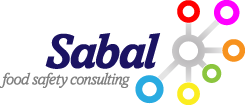 November 2015
November 2015
Preventive Controls and HACCP Integration
Almost everyone in the food & beverage industry is concerned with the implementation of the new FDA’s “Food Safety Plan” and with the development and implementation of the “Preventive Controls”. From my point of view, the greatest worry is: how to integrate current food safety programs, where HACCP is the main component for the analysis of the risks of food safety hazards, with the FDA’s “Food Safety Plan”?
In my opinion, the core of the integration process greatly relies on the analysis of the risks; the difference between a hazard that requires a critical control point and a hazard that requires a preventive control is their risk.
When reading 21 CFR 117 - Current Good Manufacturing Practice, Hazard Analysis, and Risk-Based Preventive Controls for Human Food, Section 117.3 – Definitions, the definition of a “hazard requiring a preventive control” is: “a known or reasonably foreseeable hazard for which a person knowledgeable about the safe manufacturing, processing, packing, or holding of food would, based on the outcome of a hazard analysis (which includes an assessment of the severity of the illness or injury if the hazard were to occur and the probability that the hazard will occur in the absence of preventive controls), establish one or more preventive controls to significantly minimize or prevent the hazard in a food and components to manage those controls (such as monitoring, corrections or corrective actions, verification, and records) as appropriate to the food, the facility, and the nature of the preventive control and its role in the facility's food safety system”.
As the FDA also developed the guidance document for the implementation of the HACCP method for seafood products under 21 CFR 123 – Fish and Fishery Products, I’m going to use this as reference for definitions for HACCP and to compare with the preventive controls rule. A “significant hazard” is a hazard that is “reasonably likely to occur”. The definition of a food safety hazard is: a hazard that is reasonably likely to occur and “one for which a prudent processor would establish controls because experience, illness data, scientific reports, or other information provide a basis to conclude that there is a reasonable possibility that it will occur in the particular type of fish or fishery product being processed in the absence of those controls.”
Similarities. Preventive controls and Seafood HACCP regulations require: 1) To have a person that is knowledgeable about food safety hazards, the products processed and developing control measures. 2) To implement measures to control those hazards with risks based on severity and probability (risk). 3) Those measures will be implemented because, “in the absence of those controls”, the hazards identified will cause illness or injury. 4) Even though it’s not part of the definitions, hazards from incoming goods (raw material, ingredients, processing aids, packaging material, etc.) and hazards from the process must be analyzed in both cases.
Difference. In the preventive control rule, a control measure must be implemented whenever “a known or reasonably foreseeable hazard” is identified. In the Seafood HACCP regulation, a control measure must be implemented whenever there is a hazard that is “reasonably likely to occur”. However, there is no indication on how to measure the risk of “a known or reasonably foreseeable hazard” or the risk of a hazard that is “reasonably likely to occur”.
With this in mind, the tool that will be used to measure the level of risk is what will represent the biggest challenge to all individuals responsible for the analysis of the risks of the food safety hazards in any product/process. This tool should provide a simple but thorough description of the different levels of severity and likelihood of the hazards. I believe there is also a good opportunity to add to this risk analysis tool another variable: detection. Whenever food safety hazards are analyzed, the risk of those should be adequately assessed by determining the severity, likelihood and detection of the hazards.
What is the severity of a food safety hazard? Is the consequence that will produce. It is normally referenced as death, illness or injury. What is the likelihood of a food safety hazard? It’s the chance that the hazard identified may happen during operations. What is the detection of a food safety hazard? Is the ability to detect the hazard.
In the World Health Organization / Food and Agriculture Organization of the United Nations document titled “Risk Characterization of Microbiological Hazards in Food”, there are several methods to determine the level of risk and each method has its own pros and cons, mostly associated with the level and deepness of the knowledge and skills of the individual(s) performing the analysis of the risks to food safety.
Whatever is the method used to determine the level of risk of all hazards in a food safety system, the “qualified individual” must have very good skills on how to apply sound scientific knowledge to be able to comply with the preventive controls rule while maintaining the HACCP program in place.




